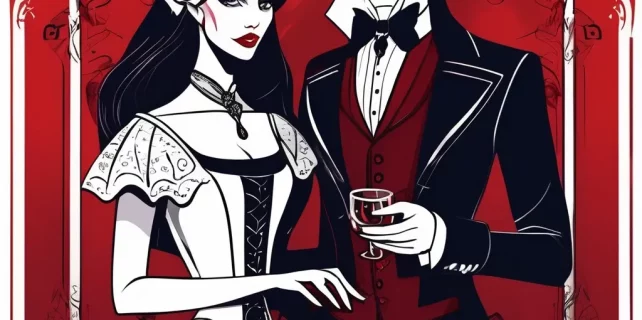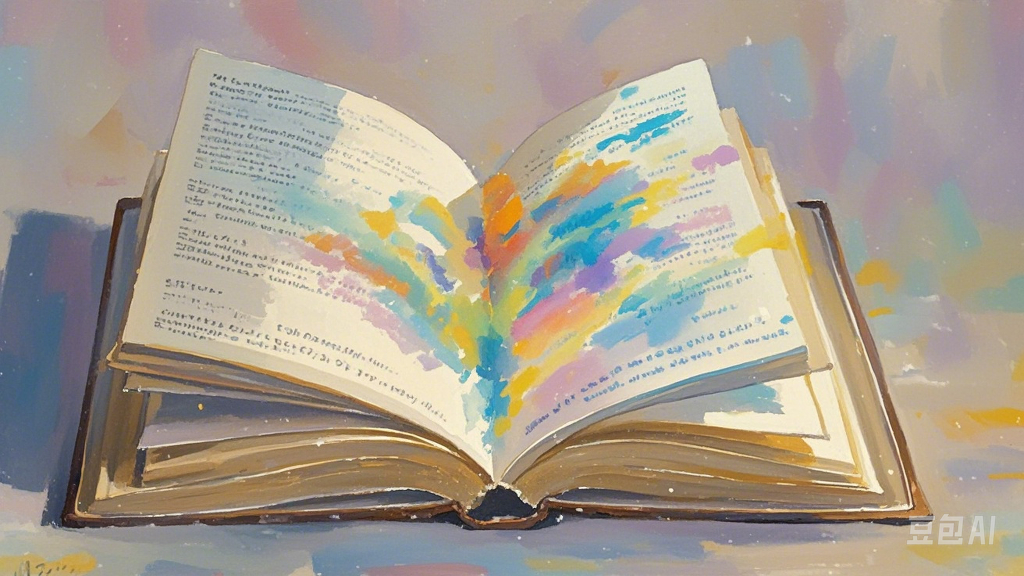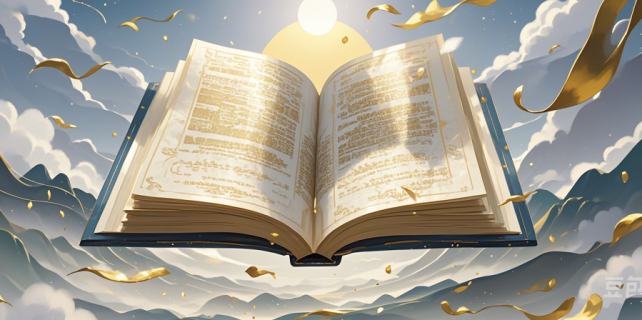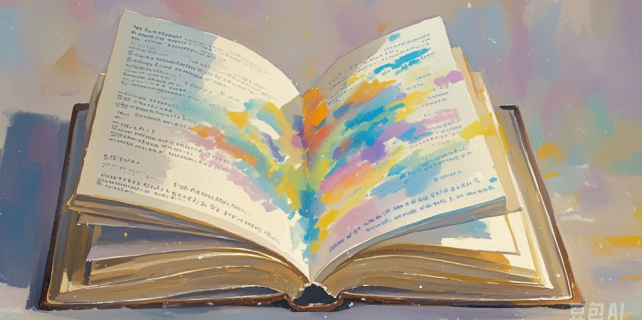
How to Strengthen Your Novel’s Plot: Creating Suspense and Dramatic Conflict
1. The Visual Impact of Novel Plot
Today’s training content is: “Eye-pleasing—Discussing the Visual Impact of Articles.”
This training is primarily aimed at beginners. During the session, I ask everyone not to interrupt or send images and emojis. If you have questions, please wait until the end of the training; I will leave time for questions afterward.
Recently, I have been reading a lot of books by new authors, and often, the moment I open the book, I can’t get into it. I just lose interest immediately.
However, these new authors often ask me for feedback on the content and plot of their works.
Actually, even if I offer advice on the plot or content of their works, the authors won’t immediately make changes.
This is because these skills aren’t something that can be learned instantly just by receiving pointers.
But there is one thing I often emphasize that can make a significant difference once pointed out: the basics. If these are addressed, the benefits will be immediately noticeable.
Today’s theme is: Eye-pleasing—Discussing the Visual Impact of Articles.
I want you to think about this: when you first see a girl, do you just think, “She looks good,” or do you specifically notice details like her eyes, eyebrows, and mouth?
The first impression we get is the eye-pleasing feeling. We don’t focus on a person’s specific features right away; we get an overall sense of whether they are pleasant to look at or not.
Only when we feel someone is visually appealing do we then start focusing on details, like their facial features, height, and body shape.
Isn’t this the same when we read a novel?
Many authors have written tens of thousands of words, but they can’t even get a hundred collections for their book. They come to me, asking me to look at their work.
Personally, I think these works have a lot of potential—great ideas, many bright spots.
For example, character development, plot structure, creativity, or the writing style—whether humorous or serious—are all things that attract me to keep reading.
But ask yourself: if a book starts with chapters that are about 2000 words long, but only have three or four short paragraphs, would you, as the reader, continue reading?
What about sentences that are more than twenty words long, or even some that exceed thirty or forty words—who has the patience to read through that?
What about a book full of spelling errors, disjointed narrative, or excessive adjectives that confuse the subject and object? In simpler terms, when you can’t tell what the author is trying to say, who would want to keep reading?
Or, how about a chapter where every sentence starts with a quotation mark, and there’s no variation in the writing? Doesn’t that feel uncomfortable as a reader?
These are all things that readers can sense at first glance, even before they start reading. It’s called the visual impact.
I’ve talked about long paragraphs and long sentences before. The dense block of text can make a computer screen seem filled with words, and it’s tiring to read.
When a reader feels exhausted by the way the text looks, the book is already doomed.
Don’t compare yourself to top-tier writers. If we had the reputation of a master, even a chimpanzee randomly typing on a keyboard could sell books.
Online literature is a medium based on computer screens. Unlike printed media, which you can read for hours without tiring your eyes, we need to be conscious of these issues and fix the common pitfalls of traditional literary writing.
So, what kind of work has a good visual impact?
The first requirement is not monotonous. This doesn’t just mean avoiding starting every dialogue with quotation marks, but also avoiding the use of excessive names and adjectives that fill the page unnecessarily.
If a chapter starts with the main character’s name every time, I’m sure you’ve seen this in many works. Doesn’t it feel a bit strange?
If every paragraph begins with the main character’s name, you might feel the same. This monotonous style creates a sense of repetition that is unappealing to the reader.
Secondly, don’t have overly dense text and paragraphs. Today, a colleague told me that forcibly breaking the text into paragraphs could ruin the overall harmony of the article.
I said, “Maybe it will harm the overall flow, but if your text is too dense, your readers might skip it. In that case, isn’t the harmony of your article already ruined?”
My colleague thought about it and agreed, adding, “When I see sentences with over 20 words and no punctuation, I usually just skim the beginning and the end.”
I later told him, “No matter the reason, if your article makes the reader feel tired and they start skipping parts, then no matter how much you write, it’s useless.”
Because the reader just won’t read.
This is the importance of the visual impact in writing.
Honestly, I’ve explained this dozens of times, and I think writers are a bit annoyed by hearing it again. It’s nothing more than making sentences and paragraphs shorter, using varied descriptions, and avoiding monotony.
Alright, that’s all for today’s topic. Now, it’s time for questions.
Key terms:
- Simple sentence: A sentence without punctuation marks.
- Compound sentence: A complete sentence ending with a period, exclamation mark, colon, or question mark.
- Long paragraph: A paragraph over 300 words.
2. How to Strengthen the Plot of a Book
How can we strengthen the plot of a book? Today, I’m going to talk about how to enhance the plot. The so-called story plot is about increasing the suspense of the story, and the creation of suspense mainly relies on the following conditions:
- The character’s fate is threatened by potential danger.
- Life and death, success and failure, are all possible outcomes, offering two possible fates and two possible endings.
- There is a conflict that is evenly matched and must have a resolution.
- The main characters’ personalities and actions evoke strong emotional responses, either love or hate, from the audience.
- The audience has a clear understanding of the direction of future events. Logical development of the story and strong emotional responses to the characters are two important elements that create suspense.
Suspense in stories can be categorized into two types: overall suspense and small suspense.
Overall suspense refers to the main conflict of the entire story, which should be introduced at the beginning and escalated until the climax.
This creates the emotional backbone of the dramatic structure. Expectation-based suspense is built on the premise that the audience already has some understanding or anticipation of the characters’ fates or the story’s direction.
Surprise-based suspense, on the other hand, relies on keeping the audience in the dark, surprising them with unexpected twists and developments. This is where the story diverges in ways the audience didn’t foresee but which are still logical.
In practical creation, different styles and genres of novels apply these two types of suspense in varying degrees.
- Character-driven stories tend to use expectation-based suspense more, while plot-driven dramas tend to use surprise-based suspense.
In practice, both forms often complement each other.
Generally speaking, authors use expectation-based suspense to maintain the emotional engagement of the audience, while surprise-based suspense introduces dramatic shifts in the plot to intensify the emotional impact and conflict.
Creating, maintaining, and strengthening suspense also requires the art of restraint and delay. Some theories in drama even refer to this as “hanging” or “relief.”
For example, in “Dou Po Cang Qiong” (Battle Through the Heavens), if you study it, you’ll see that during intense conflict and story progression, the author uses side plots or interwoven scenes to delay or alleviate the main story’s tension. These temporary pauses enhance the sharpness of the conflict and increase the audience’s anticipation.
Another way to use delay is to abruptly end a scene at the peak of tension, creating suspense and urging the audience to anticipate the next development.
This alternating use of suspense and delay depends on the audience’s tolerance for continuous tension. Unrelenting tension will exhaust the audience, while temporary relief allows them to regroup emotionally, preparing for the next wave of intensity.
Social life is complex, and conflicts develop due to a variety of factors, which can cause them to progress in unexpected directions. To write compelling suspense, one must first understand how things naturally develop in real life, ensuring that the suspense is logical and consistent with the characters’ development.
Sudden turn or twist, also known as a dramatic shift, refers to a sudden change in direction—going from adversity to fortune or from fortune to adversity.
This technique enhances drama by showing a fundamental change in a character’s fate or emotions.
Discovery is another technique, referring to a character’s realization or new understanding of themselves, their relationships, or important facts. In creative practice, discovery and twists are often used together to trigger major plot changes.
For example, in Oedipus Rex by Sophocles, Oedipus discovers that he is the murderer he has been seeking. This twist transforms a wise king into a blind, self-exiled beggar.
In novel creation, effective twist scenes not only focus on the plot’s ups and downs but also delve into the characters’ psychological changes.
Using psychological activities, such as dreams, illusions, and memories, to organize time and space on stage allows for a deeper portrayal of characters’ internal struggles.
This is similar to the structure of stream-of-consciousness in modernist drama, like Arthur Miller’s Death of a Salesman, where the character’s psychological conflict shapes the entire narrative structure.
In Chinese opera, due to its freedom of movement, two-dimensional space is often employed to depict the inner world of the character, which is reflected in the emotions of the character.
Through these techniques, the character’s inner turmoil can be directly conveyed, allowing the audience to better understand the emotional changes, creating an emotional and psychological double climax.
In novel writing, expansion and condensation are frequently used. Expanding describes small details, while condensation eliminates non-essential parts to allow for clearer plot development.
By combining drama, suspense, and delay, writers can create vivid, memorable narratives.

































